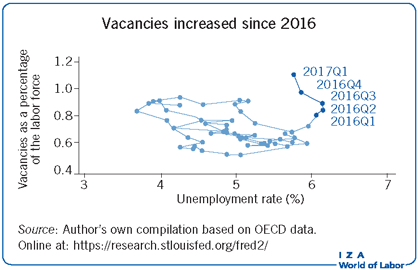Elevator pitch
Austria is an interesting economy due to its strong industrial relations with institutionalized collective bargaining over wage negotiations and working conditions. Currently, Austria’s GDP per capita is high, but unemployment, although comparably low on an international scale, is not declining in the aftermath of the financial crisis. The labor market is also characterized by an increasing share of mostly low-skilled foreign workers. High marginal labor taxes discourage low-skilled workers from leaving social assistance.

Key findings
Pros
Austria has a high level of GDP per capita.
The unemployment rate is relatively low compared to other developed nations and labor force participation has been increasing since 2004.
Public benefits to compensate for decreased income during short-time work arrangements (i.e. reduced working hours) helped mediate the effects of the financial crisis.
Austria’s dual system of apprenticeship training has led to high youth labor force participation rates.
The gender wage gap in Austria is relatively low by international comparison, and has been decreasing over the past decade.
Cons
The unemployment rate in Austria is currently increasing.
Employer and employee taxes on labor income (the labor tax wedge) were the sixth highest among the 35 OECD member countries in 2016 which dampens labor demand and supply.
The majority of immigrants remain employed in low-paid jobs.
Real wages have been increasing rather slowly.
Since 2013, the share of long-term unemployed people has been increasing at an alarming rate.